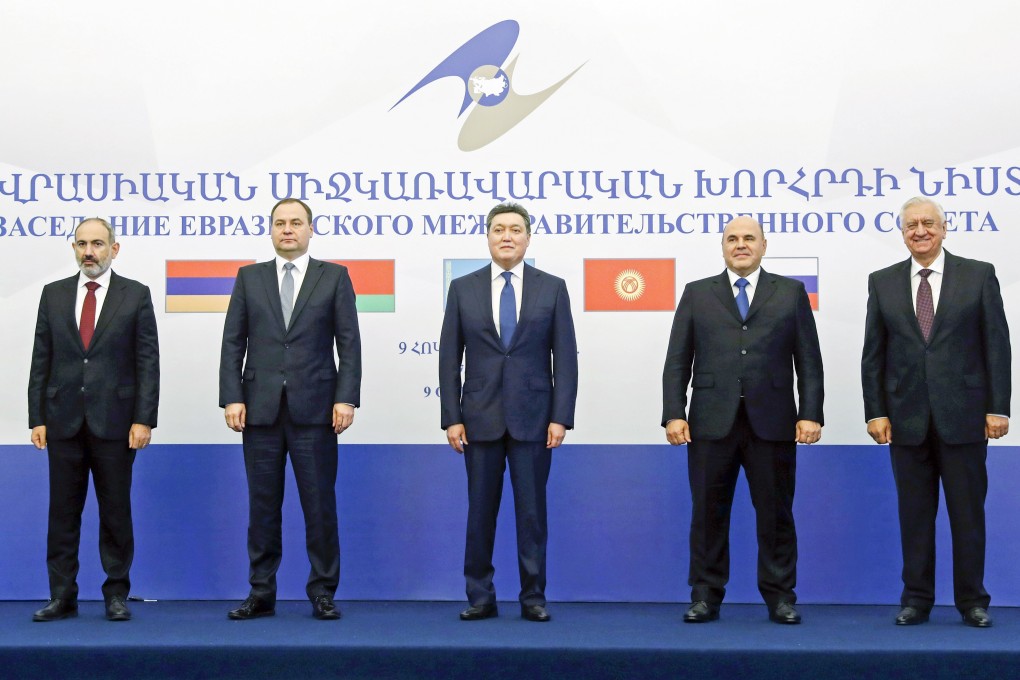China, Russia seek to curb use of US dollar in Eurasian trade bloc deals to minimise risks
- Collaboration between China and the Eurasian Economic Union’s five member states has strengthened on the back of China’s Belt and Road Initiative
- The union’s minister of integration and macroeconomics urges creation of new Eurasian monetary and financial system in absence of a shared currency in the bloc

By creating its own monetary and financial system, an economic and trade bloc backed by Russia is looking to reduce its reliance on the US dollar and euro for internal trading and in deals with China.
Sergei Glazyev, the union’s minister of integration and macroeconomics and a former adviser to Russian President Vladimir Putin, said on Monday in an online forum about extending EAEU-China collaboration that the union is increasing the use of national currencies to minimise risks.

02:35
Belt and Road Initiative explained
“Russia and China have created their own payment systems and a system of electronic information exchange between banks, but economic activity participants are still very inactive in using these infrastructure elements and still work in foreign currencies,” Glazyev said.
“I believe that we should radically reverse the situation and create our own Eurasian monetary and financial system,” he said. “It would insure us against risks and would be reliable, transparent, convenient and efficient, and would not be burdensome for economic activity participants.”